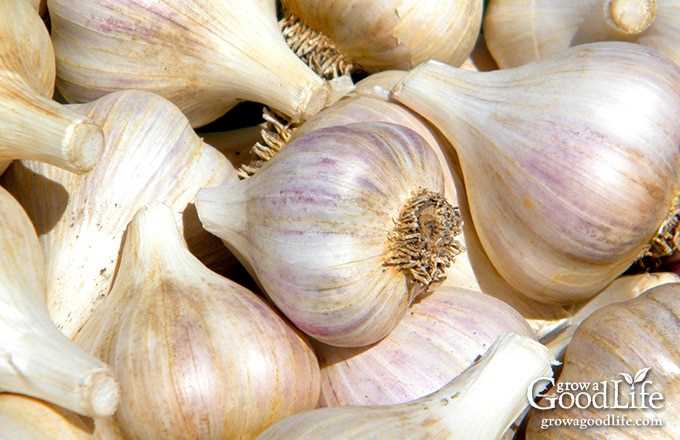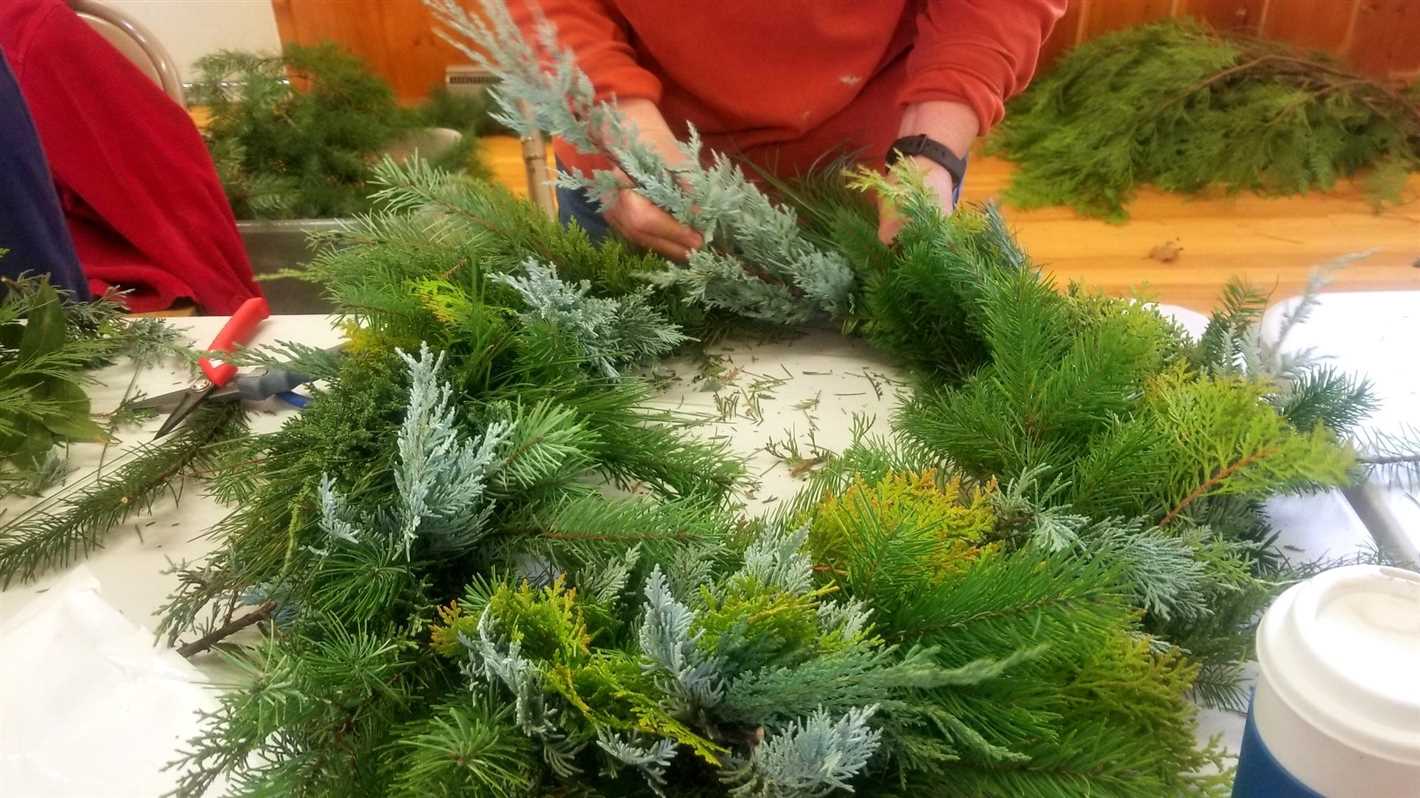- Growing Alycha: Simple Care Tips for Maximum Harvest
- Choose the Right Location
- Provide Well-Drained Soil
- Water Regularly
- Prune Properly
- Fertilize Annually
- Pest and Disease Control
- Harvest at the Right Time
- Choosing the Right Location
- Sunlight
- Soil Quality
- Protection from Wind
- Space
- Accessibility to Water
- Preparing the Soil
- 1. Clear the Area
- 2. Test the Soil
- 3. Add Organic Matter
- 4. Loosen the Soil
- 5. Level the Soil
- 6. Mulch the Soil
- 7. Water the Soil
- 8. Monitor and Adjust
- Planting the Alycha Trees
- 1. Choosing the right location
- 2. Preparing the soil
- 3. Digging the planting hole
- 4. Planting the tree
- 5. Watering and mulching
- 6. Regular maintenance
- 7. Staking the tree (if necessary)
- Watering and Fertilizing
- Protecting from Pests and Diseases
- 1. Regularly inspect your plants
- 2. Practice good sanitation
- 3. Encourage beneficial insects
- 4. Use organic pest control methods
- 5. Prevent fungal diseases
- 6. Remove infected plants or parts
- 7. Use mulch
- 8. Rotate crops
- Pruning and Training
- Why pruning is important for alycha plants?
- When to prune alycha plants?
- How to prune alycha plants?
- Training alycha plants
- Conclusion
- Harvesting the Alycha
- Timing
- Harvesting Technique
- Harvesting Frequency
- Storage
- Using Your Harvest
- Storage and Preservation
- 1. Refrigeration
- 2. Freezing
- 3. Canning
- 4. Dehydration
- 5. Making Preserves and Jams
- Question-answer:
- What is alycha?
- Where can I grow alycha?
- When is the best time to plant alycha?
- How do I care for my alycha tree?
- How long does it take for alycha fruits to mature?
- Video: 5 Tips to Grow Big Bushy Basil Plants
When it comes to growing alycha (plums) in your garden, proper care and attention make all the difference in maximizing your harvest. Alycha trees are known for their delicious fruits and beautiful blossoms, but they require specific care to thrive. Whether you are a seasoned gardener or a beginner, these simple tips will help you grow healthy alycha trees and enjoy an abundant harvest.
Choose the Right Location: Alycha trees thrive in full sun, so it’s important to choose a location in your garden that receives at least six hours of direct sunlight per day. Additionally, make sure the soil is well-draining to prevent waterlogging, which can lead to root rot.
Prune Regularly: Pruning is essential for alycha trees as it helps to maintain their shape, promote airflow, and remove dead, damaged, or diseased branches. Pruning should be done during the dormant season, which is late winter or early spring before new growth begins. Remember to use clean and sharp pruning tools to make clean cuts and prevent the spread of diseases.
“Proper care and attention make all the difference in maximizing your harvest.
Fertilize Appropriately: Alycha trees benefit from regular fertilization to provide adequate nutrients for healthy growth and fruit production. Start fertilizing in early spring, just as new growth begins, and continue every six to eight weeks throughout the growing season. Use a balanced fertilizer with equal amounts of nitrogen, phosphorus, and potassium, as well as micronutrients.
Water Wisely: Adequate watering is crucial for alycha trees, especially during the growing season. Water deeply and thoroughly, making sure the soil is evenly moist but not waterlogged. Avoid overwatering, as it can lead to root rot. Mulching around the base of the tree can help retain moisture and suppress weed growth.
By following these simple care tips, you can ensure the health and productivity of your alycha trees, and enjoy a bountiful harvest of delicious plums. Remember to stay consistent with your care routine and monitor the trees for any signs of pests or diseases. With patience and proper care, your alycha trees will reward you with plenty of sweet and juicy fruits to enjoy.
Growing Alycha: Simple Care Tips for Maximum Harvest
Choose the Right Location
When growing alycha, it’s important to choose a location that receives full sun for at least six to eight hours a day. Alycha trees thrive in warm climates, so make sure the location has good air circulation and is not prone to frost or cold drafts.
Provide Well-Drained Soil
Alycha trees prefer well-drained soil with a pH level between 6.0 and 6.5. Test the soil and amend it with organic matter, such as compost or aged manure, to improve drainage and fertility. Avoid planting alycha trees in heavy clay soils or areas with poor drainage.
Water Regularly
Keep the soil evenly moist, especially during the growing season. Alycha trees require about 1 to 2 inches of water per week. Water deeply and slowly, allowing the water to reach the roots. Ensure the soil has good drainage to prevent waterlogging, which can lead to root rot.
Prune Properly
Regular pruning is essential for alycha trees to maintain their shape and promote better fruit production. Prune in late winter or early spring before new growth appears. Remove any dead or damaged branches, as well as any suckers or water sprouts. Prune to open up the canopy and increase air circulation.
Fertilize Annually
Feed alycha trees with a balanced fertilizer in early spring before new growth begins. Use a slow-release fertilizer or organic fertilizer according to the package instructions. Avoid over-fertilizing, as it can lead to excessive vegetative growth at the expense of fruit production.
Pest and Disease Control
Monitor your alycha trees regularly for any signs of pests or diseases. Common pests include aphids, mites, and fruit flies, while common diseases include powdery mildew and leaf spot. Use organic or chemical controls as necessary, following the instructions carefully. Insecticidal soap or horticultural oil can be effective against pests, while fungicides can help control fungal diseases.
Harvest at the Right Time

Alycha fruits are ready to harvest when they have a deep red or purple color and are slightly soft to the touch. Avoid harvesting them too early, as they will not ripen properly off the tree. Gently twist or cut the fruits from the tree to avoid damaging the branch or other fruits.
By following these simple care tips, you can ensure maximum harvest from your alycha trees. With proper care, you’ll be able to enjoy delicious, juicy alycha fruits straight from your own backyard.
Choosing the Right Location
When growing alycha, choosing the right location is crucial for the plant’s health and productivity. Here are some important factors to consider when selecting a location for your alycha plants:
Sunlight
Alycha plants thrive in full sunlight. It is important to choose a location that receives at least 6-8 hours of direct sunlight each day. Planting your alycha in a sunny spot will ensure that the fruit ripens properly and that the plant stays healthy and productive.
Soil Quality
Alycha plants prefer well-draining soil that is rich in organic matter. Before planting, test the soil pH and make sure it falls within the ideal range of 6.0-6.8. If the soil is too acidic, you can add lime to raise the pH. If it is too alkaline, you can add sulfur to lower the pH.
Additionally, consider adding compost or well-decomposed manure to the soil to improve its fertility and structure. This will provide your alycha plants with the necessary nutrients for optimal growth and development.
Protection from Wind
Alycha plants are susceptible to wind damage, especially when they are young and have tender branches. Choose a location that is protected from strong winds, such as near a wall, fence, or other structures. If necessary, you can also use stakes or plant windbreaks to shield the plants from the wind.
Space
Ensure that you have enough space to accommodate your alycha plants. Each plant requires a distance of at least 6-8 feet between them to allow for proper air circulation and sunlight penetration. Providing adequate space will help prevent the spread of diseases and ensure that each plant receives adequate nutrients for optimum growth.
Consider the mature size of the alycha plant and plan accordingly to avoid overcrowding.
Accessibility to Water
Alycha plants need regular watering to stay healthy and produce a good harvest. Choose a location that is easily accessible to water. Installing a drip irrigation system or placing the plants near a water source will make watering more convenient and efficient.
Remember to water your alycha plants consistently, especially during dry periods, to prevent stress and maintain fruit production.
By considering these factors when choosing the right location for your alycha plants, you will be setting them up for success and maximizing your harvest potential.
Preparing the Soil
1. Clear the Area
Before planting alycha, it is important to clear the area of any weeds, rocks, or other debris that may hinder the growth of the plants. Use a rake or shovel to remove these obstacles and create a clean planting space.
2. Test the Soil
Testing the soil is essential to determine its pH levels and nutrient content. This information will help you make any necessary amendments to ensure optimal conditions for alycha growth. You can purchase a soil testing kit from a gardening center or consult a professional for assistance.
3. Add Organic Matter
Adding organic matter to the soil improves its structure, drainage, and nutrient-holding capacity. Mix in well-rotted compost, aged manure, or leaf mold to enrich the soil and provide the necessary nutrients for healthy alycha plants.
4. Loosen the Soil
Alycha roots need to penetrate the soil easily to access water and nutrients. Use a garden fork or tiller to loosen the soil to a depth of at least 12 inches. This will create a loose, friable soil structure that promotes root growth and allows for proper water drainage.
5. Level the Soil
After loosening the soil, use a rake or garden leveling tool to create a smooth and even surface. This ensures that water is distributed evenly throughout the planting area and prevents pooling or waterlogging, which can be detrimental to alycha plants.
6. Mulch the Soil

Applying a layer of organic mulch, such as straw or wood chips, around the base of alycha plants helps to regulate soil temperature, retain moisture, and suppress weed growth. Spread a 2- to 3-inch layer of mulch evenly over the soil surface, leaving a gap around the plant stem to prevent rotting.
7. Water the Soil
Before planting alycha, it is crucial to thoroughly water the soil to ensure it is adequately moist. This provides a good starting point for the plants and encourages root establishment. After planting, continue to water regularly, keeping the soil consistently moist but not waterlogged.
8. Monitor and Adjust
Regularly monitor the soil moisture, pH levels, and nutrient requirements of your alycha plants. Adjust watering and fertilization practices as needed to maintain optimal growing conditions. It is also advisable to keep a record of your observations and interventions for future reference and improvement.
| Amendment | Amount | Benefits |
|---|---|---|
| Compost | 2-3 inches | Improves soil structure and nutrient content |
| Aged Manure | 2-3 inches | Enhances soil fertility and moisture-holding capacity |
| Leaf Mold | 2-3 inches | Increases organic matter and improves soil aeration |
| Dolomitic Lime | As needed | Raises soil pH level if acidic |
| Bone Meal | 5-10 pounds per 100 square feet | Supplies phosphorus for root development and fruit production |
Planting the Alycha Trees
Planting Alycha trees properly is essential for their healthy growth and maximum harvest. Following the steps below will help ensure a successful planting process:
1. Choosing the right location
Select a sunny location for planting your Alycha trees. They thrive in full sunlight, which helps promote optimal fruit production. Additionally, choose a spot that has well-drained soil to prevent waterlogging, as Alycha trees do not tolerate waterlogged conditions well.
2. Preparing the soil
Before planting, prepare the soil by removing any weeds or grass from the area. Loosen the soil to a depth of at least 12 inches (30 cm) to provide a loose and aerated environment for root growth.
3. Digging the planting hole
Dig a hole that is wider and slightly deeper than the root ball of the Alycha tree. This extra space will allow the roots to spread out more easily and establish themselves in the soil. The hole should be at least 2-3 times wider than the root ball to ensure proper root development.
4. Planting the tree
Place the Alycha tree into the planting hole, making sure that the top of the root ball is level with or slightly above the soil surface. Backfill the hole with the soil, gently firming it around the roots to eliminate air pockets. Avoid planting the tree too deep, as this can lead to rotting or suffocating the roots.
5. Watering and mulching
After planting, thoroughly water the Alycha tree to settle the soil and ensure good root-to-soil contact. Apply a layer of organic mulch, such as wood chips or straw, around the base of the tree to conserve moisture and suppress weed growth. Mulching also helps regulate soil temperature and protects the roots from extreme temperatures.
6. Regular maintenance
Provide regular care and maintenance to your Alycha trees, including watering, fertilizing, and pruning as needed. Monitor the tree for pests and diseases, and take appropriate action if any issues arise.
7. Staking the tree (if necessary)
If your Alycha tree is weak or top-heavy, staking may be necessary to provide support. Use soft materials, such as tree ties or nylon stockings, to secure the tree to a sturdy stake. Avoid tying the tree too tightly, as this can restrict growth and damage the trunk.
By following these planting tips, you can give your Alycha trees a strong start and improve your chances of a bountiful harvest.
Watering and Fertilizing
Watering plays a crucial role in the growth of alycha trees. Here are some tips to ensure your alycha tree gets the right amount of water:
- Check the soil moisture regularly by inserting your finger into the soil. If it feels dry, it’s time to water.
- Water the tree deeply and thoroughly to encourage deep root growth. Shallow watering can result in shallow root development.
- Provide alycha trees with 1-2 inches of water per week during the growing season. Increase water frequency during hot, dry weather.
- Consider using a drip or soaker hose system to provide a slow, steady supply of water directly to the roots.
Fertilizing the alycha tree can help promote healthy growth and maximize the harvest. Here are some fertilizer recommendations:
- Apply a balanced, slow-release fertilizer in early spring before new growth begins. Follow the instructions on the fertilizer package for the correct application rate.
- Use organic fertilizers such as compost or well-rotted manure to provide the tree with essential nutrients. Apply these organic fertilizers in early spring or late fall.
- Avoid over-fertilizing, as it can lead to excessive vegetative growth and reduced fruit production.
It’s important to note that the specific watering and fertilizing needs may vary depending on factors such as climate, soil type, and tree age. Monitor your alycha tree’s growth and adjust the watering and fertilizing practices accordingly.
Protecting from Pests and Diseases
Alycha plants are susceptible to a variety of pests and diseases that can significantly reduce the harvest and quality of the fruit. It’s important to take preventive measures and identify problems early on to protect your plants and maximize your harvest. Here are some tips:
1. Regularly inspect your plants

Take the time to inspect your alycha plants regularly. Look for signs of pests, such as aphids, mites, or caterpillars, as well as any unusual discoloration or wilting of leaves. Early detection can help prevent an infestation from spreading.
2. Practice good sanitation
Remove any fallen leaves or fruits from the ground around your plants. These can provide a breeding ground for pests and diseases. Also, keep your garden clean by removing weeds and other debris that can harbor pests.
3. Encourage beneficial insects
Some insects are natural predators of common pests. Planting flowers and herbs that attract beneficial insects, such as ladybugs or lacewings, can help keep pest populations in check. Additionally, avoid using broad-spectrum pesticides that can harm beneficial insects.
4. Use organic pest control methods
Consider using organic pest control methods, such as neem oil or insecticidal soaps, to treat pest infestations. These products are less harmful to the environment and can be effective against a range of pests.
5. Prevent fungal diseases
Alycha plants are prone to fungal diseases, such as powdery mildew or leaf spot. To prevent these diseases, avoid overhead watering and instead water at the base of the plants. Also, provide good air circulation by spacing your plants adequately, and trim any overcrowded branches or foliage.
6. Remove infected plants or parts
If you notice any signs of disease on your plants, promptly remove and dispose of the infected parts. This will help prevent the spread of the disease to other plants in your garden.
7. Use mulch

Applying a layer of organic mulch around the base of your plants can help suppress weeds and maintain soil moisture. It can also act as a barrier against certain pests and diseases.
8. Rotate crops
To prevent the buildup of pests and diseases in the soil, practice crop rotation. Avoid planting alycha in the same spot year after year. Instead, rotate with other crops from different plant families.
By following these tips, you can protect your alycha plants from common pests and diseases, ensuring a healthy and bountiful harvest of delicious fruits.
Pruning and Training

Why pruning is important for alycha plants?
Pruning is an essential practice for alycha plants as it helps maintain their health and maximizes fruit production. By removing old, damaged, or diseased branches, pruning promotes air circulation and sunlight penetration, reducing the risk of fungal diseases and improving fruit quality.
When to prune alycha plants?
The best time to prune alycha plants is during the dormant season, which is typically in late winter or early spring before new growth begins. Pruning during this time allows the plant to focus its energy on new growth and fruit production during the growing season.
How to prune alycha plants?
Here are some guidelines for pruning alycha plants:
- Start by removing any dead, broken, or diseased branches. Make clean cuts close to the main stem using sharp pruning shears.
- Thin out crowded branches by removing weak or crossed branches. This will improve air circulation and sunlight penetration, promoting overall plant health.
- Trim back excessively long branches to maintain the desired shape and size of the plant.
- After pruning, apply a thin layer of mulch around the base of the plant to help retain moisture and suppress weeds.
Training alycha plants
Training alycha plants refers to directing their growth in a specific manner to optimize fruit production and facilitate harvesting. Here are some training techniques for alycha plants:
- Espalier: This technique involves training the plant to grow against a wall or fence in a horizontal or fan-like pattern. It saves space and allows better light exposure for increased fruit production.
- Trellis: Installing a trellis provides support for the plant’s growth and helps distribute the weight of the fruit. It also makes harvesting easier.
- Pruning for shape: Regular pruning can help maintain the desired shape of the plant, ensuring easier access to fruits and improving overall aesthetics.
Conclusion
Pruning and training are essential practices for alycha plants. Proper pruning helps maintain plant health, improves fruit production, and reduces the risk of diseases. Training techniques like espalier and trellising optimize fruit production and make harvesting easier. By following these care tips, you can maximize your alycha harvest and enjoy a bountiful crop.
Harvesting the Alycha
Harvesting alycha is an exciting time for any gardener or fruit enthusiast. Here are some tips to help you have a successful harvest:
Timing
The timing of when to harvest your alycha depends on the variety and personal preference. Generally, alycha is ready to be harvested when it is fully colored and soft to the touch. Avoid picking alycha too early as it may not ripen properly.
Harvesting Technique
When harvesting alycha, it is best to use a pair of garden shears or scissors to prevent damage to the fruit and the plant. Carefully cut the alycha from the stem, leaving a short stem attached to the fruit. Be gentle to avoid bruising or puncturing the alycha.
Harvesting Frequency
Alycha plants produce fruit throughout the season. To maximize your harvest, check the plants regularly and harvest the ripe fruit as soon as they are ready. This will encourage the plant to continue producing more fruit.
Storage
Alycha should be eaten fresh for the best flavor, but if you have a surplus, you can store them in the refrigerator for a few days. Place them in a container or bag and store them in the crisper drawer to keep them fresh.
Using Your Harvest
Alycha can be enjoyed fresh or used in a variety of recipes. They are delicious when eaten on their own, added to fruit salads, used as toppings for desserts, or even made into jams and jellies. Get creative and experiment with different ways to enjoy your harvest!
| Tip | Description |
|---|---|
| 1 | Harvest alycha when fully colored and soft to the touch. |
| 2 | Use garden shears or scissors to harvest alycha. |
| 3 | Check plants regularly and harvest ripe fruit promptly. |
| 4 | Store alycha in the refrigerator for a few days if needed. |
| 5 | Enjoy alycha fresh or use them in various recipes. |
Following these tips will help you get the most out of your alycha harvest and enjoy the delicious fruits of your labor.
Storage and Preservation
Proper storage and preservation techniques are essential to ensure that you can enjoy the delicious taste of alycha for an extended period.
1. Refrigeration
Alycha can be stored in the refrigerator to extend its shelf life. Place the alycha in a perforated plastic bag or a container that allows for proper air circulation. This will prevent excess moisture and mold growth. The alycha can be stored in the refrigerator for up to two weeks.
2. Freezing
To preserve alycha for an even longer period, you can freeze them. Start by washing the alycha and removing the pits. Then, spread them evenly on a baking sheet and place it in the freezer. Once frozen, transfer the alycha to airtight freezer bags or containers. Frozen alycha can be stored for up to six months.
3. Canning
Another preservation method is canning. This method allows you to enjoy alycha throughout the year. Begin by washing the alycha and removing the pits as well. You can then pack the alycha into sterilized jars and cover them with a sugar syrup or fruit juice. Process the jars in a water bath canning method according to the guidelines provided with the canner. Canned alycha can be stored for up to one year.
4. Dehydration
Dehydrating alycha is a great way to have a nutritious snack that can be enjoyed on the go. Start by cutting the alycha in half and removing the pit. Then, place the alycha halves on a dehydrator tray or a baking sheet lined with parchment paper. Set the dehydrator or oven to a low temperature, around 135°F (57°C), and let them dry for about 12 to 24 hours. Once fully dehydrated, store them in an airtight container. Dehydrated alycha can be stored for up to a year.
5. Making Preserves and Jams

If you prefer to enjoy alycha in the form of jams, jellies, or preserves, you can make them using cooked alycha. Remove the pits and cook the alycha with sugar, lemon juice, and pectin (if desired). Once thickened, transfer the mixture to sterilized jars and seal them. Process the jars in a water bath canner for the recommended time. Homemade preserves and jams can be stored for up to one year.
By utilizing these storage and preservation techniques, you can enjoy the taste of alycha long after the harvesting season has ended.
Question-answer:
What is alycha?
Alycha, also known as cherry plum or myrobalan plum, is a fruit tree that produces small, round, and sweet fruits. It belongs to the Prunus genus, which includes other plum species.
Where can I grow alycha?
Alycha trees thrive in temperate climates and can be grown in various regions around the world. They prefer well-draining soil and full sun exposure.
When is the best time to plant alycha?
The best time to plant alycha is in late winter or early spring, before the growing season begins. This allows the tree to establish its roots before the summer heat.
How do I care for my alycha tree?
To care for your alycha tree, make sure to water it regularly, especially during dry periods. Prune the tree in late winter to remove dead or damaged branches. Apply a balanced fertilizer in early spring and mulch around the base to retain moisture and suppress weeds.
How long does it take for alycha fruits to mature?
Alycha fruits typically take about 3-4 months to mature after flowering. The exact time may vary depending on the variety and growing conditions.







